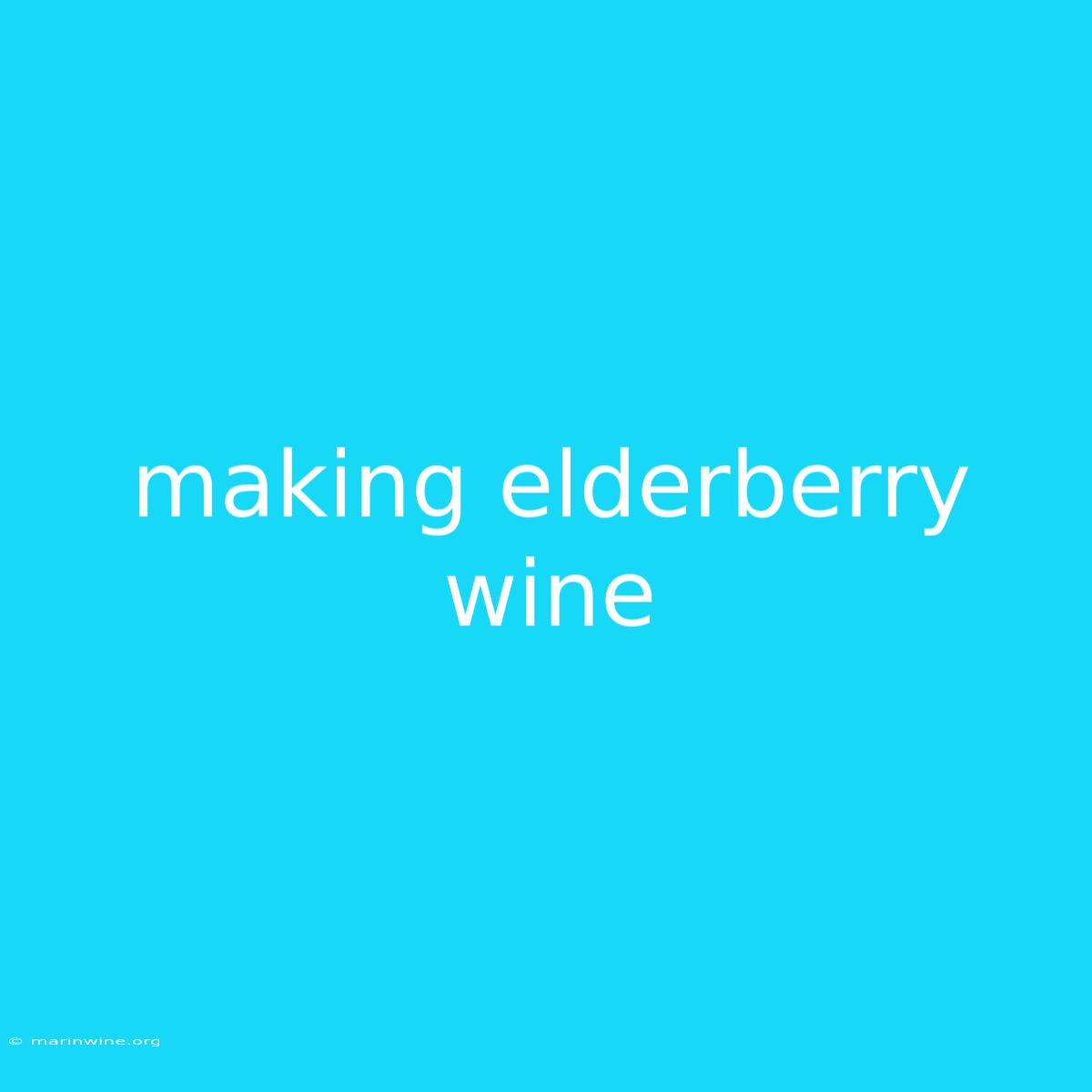Unlocking the Secrets of Elderberry Wine: A Journey into Flavor and Tradition
Have you ever wondered what makes elderberry wine so unique? It's more than just a delicious beverage – it's a vibrant blend of tradition, health benefits, and an intriguing flavor profile.
Why It Matters: Elderberry wine is enjoying a resurgence in popularity, fueled by its rich history, potential health benefits, and captivating flavor. This article explores the art of making elderberry wine, delving into its key aspects, benefits, and techniques to help you unlock its secrets.
Key Takeaways of Elderberry Wine
| Feature | Description |
|---|---|
| Flavor: | Sweet, tart, and slightly floral, with notes of honey and spice. |
| Health Benefits: | High in antioxidants, potentially boosting the immune system and offering anti-inflammatory properties. |
| Versatility: | Can be enjoyed on its own, used in cocktails, or paired with various dishes. |
| Making Process: | Requires careful harvesting, preparation, fermentation, and aging. |
Elderberry Wine: A Symphony of Flavors and Tradition
Elderberry wine is a testament to the enduring power of natural ingredients and time-honored practices. Its journey from humble berry to a delightful beverage is a fascinating one.
The Essence of Elderberries
Elderberries, small, dark berries with a unique flavor profile, are the heart of elderberry wine. They contribute a blend of sweetness, tartness, and a touch of bitterness that balances the overall flavor.
The Art of Fermentation
The process of fermentation transforms the sugars in elderberries into alcohol, creating the wine's characteristic flavor and complexity. Yeast, the magic ingredient, consumes the sugars and produces alcohol and carbon dioxide.
Aging to Perfection
After fermentation, the wine is aged in a cool, dark environment. This process allows the flavors to develop and mellow, creating a harmonious blend that's truly rewarding.
Understanding the Process: A Step-by-Step Guide
1. Sourcing and Harvesting:
- Elderberries should be ripe and plump, with a dark purple or black hue.
- Harvest berries in the early morning, avoiding the midday heat to preserve their flavor and aroma.
2. Preparation and Mashing:
- Remove stems and leaves from the berries.
- Gently crush the berries to release their juices.
3. Fermentation:
- Combine the crushed berries with water and sugar.
- Add yeast and allow the mixture to ferment for several weeks.
4. Racking and Clarifying:
- As fermentation progresses, the wine may become cloudy. Racking (transferring the wine to a clean container) helps to clarify it.
5. Aging and Bottling:
- Age the wine for several months to allow the flavors to mellow and develop.
- Bottle the wine and enjoy!
Unveiling the Benefits: A Sip of Health
Beyond its delightful flavor, elderberry wine is known for its potential health benefits.
Rich in Antioxidants: Elderberries are packed with antioxidants, which combat free radical damage and contribute to overall well-being.
Potential Immune Support: Some studies suggest that elderberries may help strengthen the immune system.
Anti-Inflammatory Properties: Elderberry extracts have shown potential anti-inflammatory effects in some studies.
FAQ: Addressing Common Questions
Q: Can I use frozen elderberries to make wine? A: Yes! Frozen elderberries work just as well as fresh.
Q: How long does it take to make elderberry wine? A: The entire process, from harvesting to bottling, takes about 6 to 8 months.
Q: Can I add other fruits to my elderberry wine? A: Absolutely! Experiment with other fruits like raspberries, blackberries, or even a hint of citrus.
Q: How do I know if my wine is ready to drink? A: The wine should be clear and have a pleasant aroma. Taste it and see if it's to your liking.
Q: How long can I store elderberry wine? A: Properly stored elderberry wine can last for several years.
Tips for Making Exceptional Elderberry Wine
1. Embrace the Harvest: Pick berries at their peak ripeness for the most intense flavor. 2. Patience is Key: Allow the wine to ferment and age properly for the best results. 3. Experiment with Flavors: Try adding a touch of honey, spices, or citrus for added complexity. 4. Store Properly: Keep your wine in a cool, dark environment to preserve its freshness. 5. Share the Joy: Enjoy your homemade elderberry wine with friends and family!
Summary by Elderberry Wine
Making elderberry wine is a journey of discovery, combining tradition, science, and the magic of nature. From the initial harvest to the final sip, it's a process that rewards patience and creativity. By understanding the key aspects of elderberry winemaking, you can unlock its secrets and create a delightful beverage that celebrates the best of the season.
Closing Message: Explore the world of elderberry wine and embark on your own adventure in crafting this unique and flavorful drink. Let your creativity guide you as you experiment with flavors and discover the joys of making your own elderberry wine.

